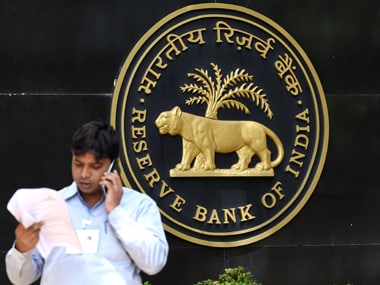The Reserve Bank of India (RBI) on Monday announced it has added private lender HDFC Bank to its list of “domestic systemically important banks” (D-SIBs) considered too big to fail. “In addition to the SBI (State Bank of India) and ICICI Bank, which continue to be identified as Domestic Systemically Important Banks (D-SIBs), the Reserve Bank of India has also identified HDFC Bank as a D-SIB, under the same bucketing structure as last year,” an RBI release said. Here are all the key facts related to the development: What does the D-SIB categorisation mean? D-SIBs are large and highly interconnected financial institutions which are important to the system. Any problems faced by these institutions can hamper the orderly functioning of the financial system, which in turn, can negatively impact the real economy. The categorisation is done based on indicators such as size, interconnectedness, substitutability and complexity. The criterion to decide the primary sample of D-SIBs was done by selecting banks with asset size beyond 2 percent of GDP. The Reserve Bank started identifying D-SIBs in 2015, and a list is disclosed every year in August. [caption id=“attachment_4010809” align=“alignleft” width=“380”]  AFP.[/caption] What does this mean for the banks in the list? The D-SIB categorisation imposes additional capital requirements on the banks. The banks are placed in appropriate buckets depending upon their Systemic Importance Scores (SISs). Based on the bucket in which a D-SIB is placed, an additional common equity requirement has to be applied to it. In case a foreign bank having branch presence in India is a Global Systemically Important Bank (G-SIB), it has to maintain additional CET1 capital surcharge in India as applicable to it as a G-SIB, proportionate to its Risk Weighted Assets (RWAs) in India. Accordingly, ICICI Bank and HDFC Bank are in the first bucket. The banks need an additional tier I capital of 0.1 percent of loans for the current financial year. From 1 April 2018, the requirement will be an additional 0.15 percent. SBI, meanwhile, is in the third bucket. It requires requires additional tier I capital of 0.3 percent this year and 0.45 percent for the next financial year. What are the concerns? First and foremost, The categorisation creates expectation of government support for them in times of financial distress. These banks also enjoy certain advantages in funding markets. On the downside, according to some experts, expectations of government support amplifies risk-taking, reduces market discipline, creates competitive distortions and increases probability of distress in future. Secondly, are there only three systemically important banks in India? An analysis of Indian banks shows that there are 11 of them with total asset size more than 2 percent of GDP. Moreover, a look at the table below shows that there are at least three state-run banks - Punjab National Bank, Bank of Baroda and Bank of India - with much more branches than that of the private sector lenders that are now part of the list.
| Bank with assets size of above 2% of GDP |
|---|
| Bank |
| State Bank of India (SBI) |
| HDFC Bank |
| ICICI Bank |
| Punjab National Bank |
| Bank of Baroda |
| Bank of India |
| Axis Bank |
| Canara Bank |
| Union Bank of India |
| IDBI Bank |
| Central Bank of India |
Moreover, after the RBI came out with the first list in August 2015, Moody’s had raised three issues (read here ): 1) India’s D-SIB framework is less rigorous than those of other jurisdictions; 2) With only two banks in India designated as D-SIBs, the country has the least number of D-SIBs among those that have implemented the framework; 3) The RBI’s capital surcharge is lower at less than 1 percent, and the RBI’s timeline for complying with the capital surcharges is longer, despite the presence of the less stringent capital requirements. Canada and Australia require compliance by 2016, and in Singapore, locally incorporated banks have had to comply with the higher capital requirements since June 2011, Moody’s said. All these are still relevant. Data by Kishor Kadam (With inputs from agencies)


)




